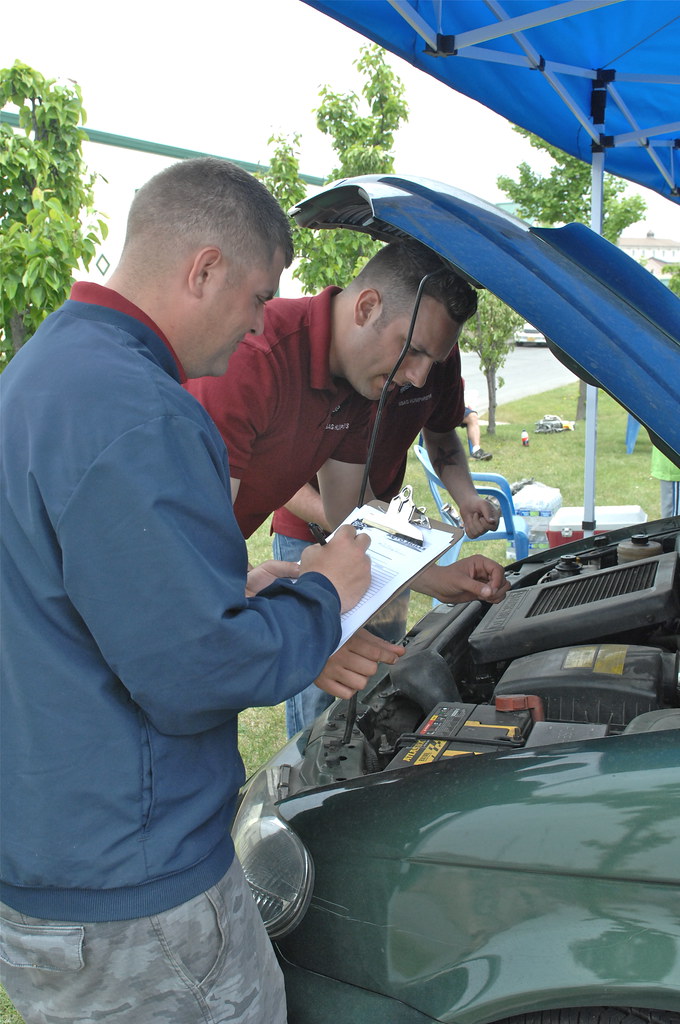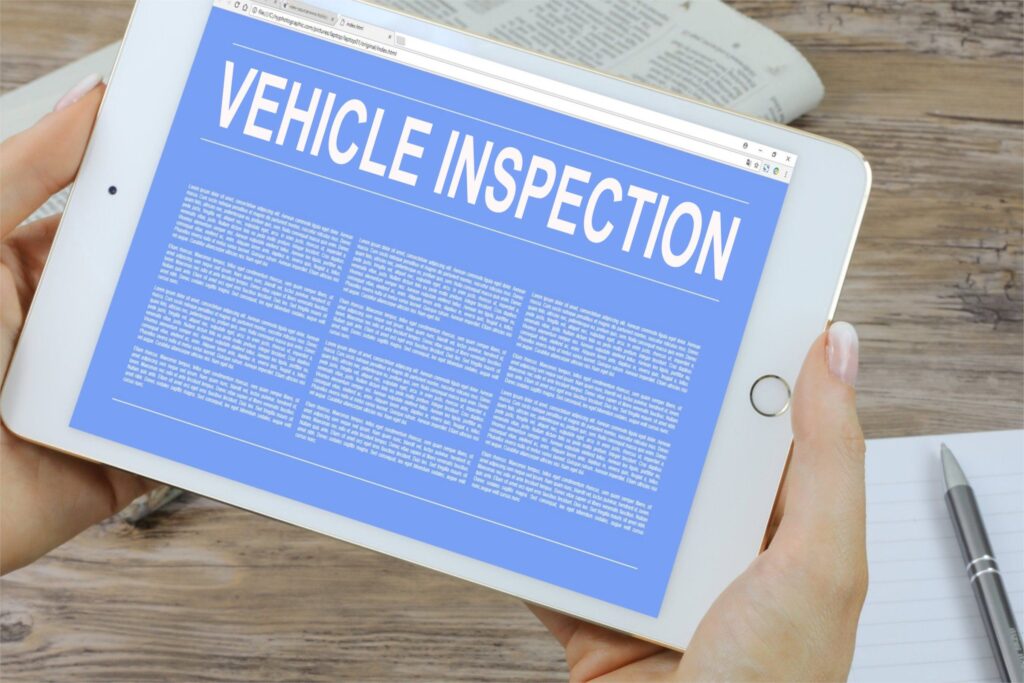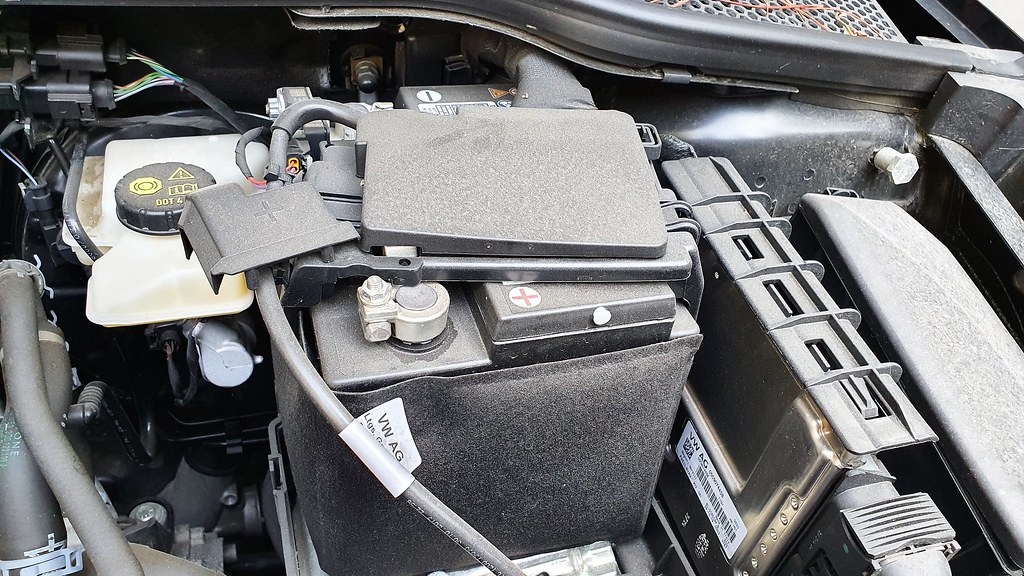
Buying a used car can indeed be a remarkably smart financial decision, offering a compelling opportunity to secure greater value for your hard-earned money. However, this promising venture is not without its inherent risks, primarily the daunting possibility of purchasing what is colloquially known as a ‘lemon’—a vehicle plagued by serious defects that are often cleverly concealed or simply not immediately apparent to the untrained eye. To navigate this intricate landscape successfully and avoid the significant pitfalls, it is absolutely essential to approach the process armed with thorough research and a keen eye for detailed inspections before committing to any purchase.
Recognizing the critical warning signs of a lemon can undeniably save you from a cascade of costly repairs, the immense frustration of legal headaches, and the lingering regret of buyer’s remorse. This comprehensive guide is specifically designed to empower you by exploring crucial ways to identify a lemon well before you finalize a used car transaction. These invaluable tips will systematically help you pinpoint potential red flags, objectively evaluate the car’s true condition, and ultimately make a truly informed decision that safeguards your investment and peace of mind.
Whether you are embarking on your very first car purchase or possess years of experience as a seasoned car owner, the insights contained within this article will equip you with the essential knowledge and unwavering confidence required to traverse the used car market successfully. We will delve into each vital tip, providing actionable advice on how to effectively protect yourself from the considerable financial and emotional toll of buying a lemon. Our aim is to ensure you drive away with a reliable vehicle, not a perpetual problem.

1. **Check the Vehicle History Report**One of the absolute first and most critical steps in effectively spotting a lemon is to diligently obtain and meticulously review the vehicle history report. Reputable services such as Carfax or AutoCheck are indispensable tools, providing comprehensive reports that consolidate vital information about the car’s past. These reports typically include details concerning previous owners, a complete accident history, the vehicle’s title status, and an overview of its service records. A truly thorough history report possesses the unique ability to unveil hidden issues that might be entirely imperceptible during a superficial physical inspection, acting as an early warning system against potential problems.
When you are meticulously reviewing the report, it is paramount to actively look for glaring red flags that demand your immediate attention. These could include multiple ownership changes occurring within an unusually short period, which can suggest prior dissatisfaction or persistent issues. A documented history of accidents, even if seemingly minor, warrants careful consideration as it can indicate underlying structural damage or shoddy repairs. Furthermore, the presence of a ‘salvage title’ is a definitive red flag, signifying that the car has been declared a total loss by an insurance company, often due to severe damage.
Additionally, pay close attention to the consistency and regularity of service records. Regular maintenance is a very strong positive indicator that the car has been well cared for by its previous owners. Conversely, a lack of consistent records or significant gaps could suggest neglect. It is important to remember that a clean vehicle history report, while certainly reassuring, does not offer an absolute guarantee that the car is in perfect condition. However, it undoubtedly provides invaluable insights into its past, empowering you to make a far more informed decision. If the seller displays any reluctance to provide a report, or if the report itself raises significant concerns, it is often prudent to walk away and explore other, safer options.
Read more about: Beyond the Wrench: How 11 Technologies Transformed Auto Repair, Leaving Simple Mechanics ‘Off the Grid’

2. **Conduct a Thorough Exterior Inspection**A meticulous exterior inspection can prove remarkably revealing, often exposing telltale signs of potential problems and past damage that sellers might attempt to conceal. Begin your examination by systematically scrutinizing the car’s entire body for any visible dents, scratches, or early signs of rust spots. Your attention should be particularly drawn to the paint job itself; inconsistencies in color or texture across different panels are strong indicators that the car has likely been repainted, potentially to mask prior damage from an accident or other incidents. Misaligned trim, overspray, or missing fasteners can also point directly to poor-quality repairs.
Next, carefully check the alignment of all body panels and doors. Panels that appear misaligned, or doors that fail to close smoothly and properly, are significant red flags that can suggest previous accidents, underlying frame damage, or inadequate repair work. Uneven gaps between panels are another classic sign of prior collision repair. It is also crucial to examine the condition of the tires; look intently for uneven wear patterns, as these can be critical indicators of deeper underlying issues such as alignment problems, suspension malfunctions, or even past structural damage that compromises the vehicle’s handling and safety.
Furthermore, inspect all windows and mirrors for any cracks, chips, or signs of improper replacement. Ensure that every single light, encompassing headlights, taillights, and turn signals, is fully functional. Critically, do not overlook the undercarriage of the vehicle; thoroughly check for any excessive rust or obvious damage, which can signal poor maintenance, exposure to harsh environmental conditions, or even previous flood damage. Water stains under the carpet, condensation in headlights, or musty smells can also confirm flood-damaged vehicles. By conducting such a comprehensive exterior inspection, you can proactively identify potential red flags and accurately gauge whether the car has been consistently well-maintained or has undergone extensive, and possibly substandard, repairs.
Read more about: Your Ultimate Checklist: 15 Essential Questions for a Smooth Family RV Trip Rental

3. **Examine the Interior for Red Flags**The interior condition of a used car offers a wealth of valuable insights into how conscientiously it has been maintained throughout its life. Initiate your interior scrutiny by inspecting the seats, dashboard, and carpets for any significant signs of wear and tear, such as conspicuous rips, persistent stains, or noticeable fading. Pay acute attention to any unusual odors lingering within the cabin; a persistent moldy or musty smell, for instance, can be a definitive indicator of water damage or even mold growth, particularly relevant in potential flood-damaged vehicles. Conversely, a burning scent might signal overheating or latent electrical issues, warranting immediate concern.
Proceed to thoroughly test all of the interior features and controls. This includes, but is not limited to, the air conditioning and heating systems, the infotainment unit, power windows, and door locks, ensuring that each component functions flawlessly and as intended. Examine the condition of the steering wheel and pedals; excessive wear on these frequently used components, disproportionate to the car’s stated age or mileage, can often suggest higher actual mileage than indicated or a history of rough, aggressive use. Such discrepancies may suggest odometer tampering, a deceptive tactic used by dishonest sellers.
Carefully inspect the roof and headliner for any stains or sagging, as these can be telltale signs of water leaks from the roof or compromised seals. Similarly, thoroughly inspect the trunk area for any signs of rust, moisture accumulation, or previous damage. Finally, confirm that all seat belts are in excellent condition, retract properly, and function securely. A well-maintained interior generally implies that the previous owner invested care in the vehicle, whereas evident signs of neglect or sloppy repair jobs, such as misaligned trim or missing fasteners, serve as stark warnings that the car might be harboring underlying, more serious issues.
Read more about: Vanished From The Road: 14 Discontinued Cars That Became Coveted Collectibles — And A Few That Just Stayed Junk

4. **Perform an Extensive Test Drive**An extensive and well-executed test drive stands as a truly crucial step in objectively evaluating a used car’s actual condition and overall performance. As you embark on the test drive, your senses should be fully engaged; pay meticulous attention to how the car handles, accelerates, and brakes across varying speeds and road conditions. Critically, listen intently for any unusual noises that emanate from the vehicle, such as persistent rattling, high-pitched squeaking, or grinding sounds, all of which are strong indicators of potential mechanical issues that could range from minor to severe. Drive on the highway and in stop-and-go traffic to get a full picture.
Assess the car’s steering responsiveness and alignment; a healthy vehicle should track straight effortlessly when driving on a level road, without demanding constant steering corrections from the driver. Rigorously test the brakes to ensure they deliver smooth, consistent, and confident stopping power, free from any unsettling vibrations or pulsations through the pedal. Monitor the engine’s performance diligently, checking for consistently smooth acceleration and a stable, quiet idle. Be acutely aware of any warning lights illuminating on the dashboard; if the check engine light is on (or suspiciously recently turned off), it could very well signify hidden trouble, and an OBD2 scanner can be invaluable here to check for stored error codes.
Furthermore, it is essential to thoroughly test the transmission by deliberately accelerating and decelerating at various speeds, ensuring smooth, precise, and seamless gear shifts. Any clunking, grinding, or whining noises during these shifts are clear signs of transmission problems. Dishonest sellers might even add thick oil or transmission additives to temporarily mask engine knocking or transmission slipping, so a longer drive (at least 15 minutes) can help reveal these. Sometimes sellers disconnect the battery to reset error codes; check if the clock or radio settings have been reset. A comprehensive test drive, ideally in daylight and dry conditions, can help you identify a multitude of potential issues that might otherwise remain hidden during a static visual inspection, thereby empowering you to make a more thoroughly informed decision.
Read more about: Beyond the Wrench: How 11 Technologies Transformed Auto Repair, Leaving Simple Mechanics ‘Off the Grid’

5. **Check for Fluid Leaks**Fluid leaks, often subtle but profoundly significant, serve as unequivocal signs of serious underlying mechanical issues that could lead to exorbitant repair costs down the line. During your meticulous inspection, it is imperative to diligently check under the car for any observable signs of fluid leaks. This includes looking for puddles or fresh stains on the ground where the car has been parked, which can indicate ongoing problems. The types of fluids to watch for are numerous and varied: oil, coolant, transmission fluid, brake fluid, and power steering fluid each have distinct characteristics.
If you do happen to notice any leaks, it becomes crucial to try and accurately identify the color and consistency of the fluid. For instance, engine oil typically appears brown or black, possessing an oily, viscous texture. Coolant, on the other hand, is usually vibrant green, yellow, or pink, and feels somewhat slippery. Transmission fluid often has a reddish hue, while brake fluid is clear to yellowish and typically thin. Power steering fluid can range from clear to reddish-brown. The specific color and location of the leak can provide valuable diagnostic clues about the component that is failing.
Beyond simply observing puddles, actively inspect the engine bay and the entire undercarriage for any more subtle signs of fluid seepage or residue. Carefully check the condition of all visible hoses and seals, looking intently for cracks, swelling, or clear signs of wear that indicate a breach. Additionally, it is vital to ensure that all fluid levels—oil, coolant, brake fluid, power steering fluid, and transmission fluid—are within their manufacturer-recommended ranges. Low fluid levels, particularly when coupled with external signs, are strong indicators of either active leaks or a pattern of neglect in maintenance. Addressing fluid leaks can indeed be a very expensive undertaking, making early identification and resolution absolutely critical before finalizing any purchase.
Read more about: Busted: The 12 Worst Coolant Flush Fallacies Mechanics Wish Drivers Would Stop Spreading

6. **Verify the Mileage and Odometer**Mileage is undeniably one of the most pivotal factors in accurately determining a used car’s inherent value and overall condition. Vehicles with excessively high mileage typically signify significant wear and tear on numerous components, potentially leading to more frequent and costly repairs. Conversely, an unusually low mileage for a car’s age should immediately raise suspicions of potential odometer tampering, a fraudulent practice designed to inflate a vehicle’s perceived value. It is crucial to be vigilant against such deceptive tactics often employed by dishonest dealers and sellers.
When you are diligently inspecting the car, it is essential to not only verify the mileage displayed on the odometer but also to compare it rigorously with the mileage information meticulously documented in the vehicle history report. Look for any telltale signs of tampering, such as inconsistent or misaligned numbers on mechanical odometers, or suspicious pixelation or blank segments on digital odometers. Discrepancies between the physical odometer reading and reported mileage in service records or history reports are a major red flag that indicates odometer rollback fraud.
Furthermore, it is wise to consider the car’s age in conjunction with its typical usage; the average annual mileage for a passenger vehicle generally hovers around 12,000 to 15,000 miles. If the displayed mileage seems unusually high or suspiciously low for the car’s specific age, do not hesitate to ask the seller for a comprehensive explanation and subsequently review the service records for consistency and authenticity. Excessive wear on components like pedals, the steering wheel, and seat upholstery, disproportionate to the stated mileage, can also strongly suggest rollback fraud. Accurate mileage information is absolutely indispensable for truthfully assessing the car’s true value and anticipating its potential future maintenance requirements, allowing you to make a far more informed and secure decision.
Read more about: Drivers, Beware: 6 High-Risk Used Cars You Must Think Twice About Before Buying in 2025

7. **Get a Pre-Purchase Inspection**Even after diligently performing all your personal inspections, the single most crucial step in effectively identifying a potential lemon is to invest in a pre-purchase inspection (PPI) conducted by a qualified and trusted independent mechanic. This professional assessment provides an invaluable, expert evaluation of the car’s condition, often uncovering hidden issues that are simply not apparent to the average buyer, no matter how confident they are in their own inspection skills. A professional mechanic brings specialized knowledge, tools, and an objective perspective that can offer profound insights and, perhaps most importantly, invaluable peace of mind before you commit to a significant investment.
During this comprehensive pre-purchase inspection, the mechanic will meticulously examine the car’s mechanical and electrical systems, thoroughly check for any fluid leaks you might have missed, rigorously inspect the brakes and suspension, and precisely test the engine’s overall performance. They will also assess the condition of critical components such as tires, belts, hoses, and other vital parts that contribute to the vehicle’s safety and operational integrity. This detailed scrutiny goes far beyond a superficial glance, delving into the core operational health of the vehicle.
The mechanic will then provide you with a detailed report of their findings, meticulously highlighting any potential issues or areas of concern. This vital information empowers you to make a truly informed decision, allowing you to either proceed with confidence, negotiate a fairer price based on the car’s actual condition, or, if warranted, walk away from a problematic vehicle. It’s also a significant red flag if the seller expresses any reluctance or pushback about allowing a PPI; a reputable seller will have nothing to hide. Our CarEdge experts unequivocally state: “no pre-purchase inspection on a used car? No deal.”
Indeed, investing a small amount in a pre-purchase inspection is a remarkably prudent choice, especially when weighed against the potentially exorbitant expense of unknowingly purchasing a lemon. This preventative measure acts as a powerful safeguard, ensuring you possess all the necessary information to make a truly wise purchasing decision and avoid the substantial financial burden of unforeseen repairs down the road. It transforms a risky gamble into a well-calculated acquisition, protecting your wallet and your peace of mind.
Read more about: Need a Ride? 15 Used Car Models You’ll Want to Steer Clear Of This Year for Hassle-Free Driving

8. **Review Title and Ownership Documents**Ensuring that all title and ownership documents are thoroughly in order is an absolutely critical, non-negotiable step in the process of buying any used car. The vehicle’s title serves as definitive proof of ownership and contains essential information about the car’s entire history, meticulously detailing previous owners, any existing liens, and, crucially, any ‘salvage’ status. A meticulous review of these documents can prevent legal entanglements and confirm the legitimacy of your potential purchase, safeguarding you from fraudulent transactions and unforeseen liabilities.
Upon receiving the title from the seller, it is paramount to review it with meticulous care for absolute accuracy. A key verification point is to ensure that the Vehicle Identification Number (VIN) prominently displayed on the title precisely matches the VIN found on the car itself—typically located on the dashboard, door sticker, and engine block. Discrepancies here can be a significant red flag, potentially indicating fraudulent activity such as VIN plate swapping by scammers attempting to conceal a car’s true, problematic history. Beyond the VIN, scrutinize the title for any telltale signs of ‘branding,’ such as labels like “salvage,” “rebuilt,” or “flood,” each of which signals significant past damage and warrants extreme caution.
Furthermore, it is imperative to confirm beyond any doubt that the seller is, in fact, the rightful and legal owner of the vehicle. You must also ascertain that there are no outstanding liens or unresolved loans associated with the car. If the title reveals a history of multiple transfers in a short span, or if the overall ownership history appears ambiguous or unclear, these are strong indicators to proceed with extreme caution. Such patterns can suggest that previous owners were quick to offload the vehicle due to persistent, unresolved issues.
Finally, confirm that all necessary paperwork, including the official bill of sale, is completed with absolute precision and accuracy. Crucially, ensure that the title is properly signed over to you the moment the purchase is finalized. By rigorously reviewing these title and ownership documents, you effectively shield yourself from potential legal complications and guarantee a smooth, legally sound transaction, thereby protecting your significant investment from the outset.
Read more about: 12 Dealership Tactics You Must Master Before Your Next Car Negotiation

9. **Evaluate the Car’s Market Value**Researching and accurately evaluating the car’s true market value is an indispensable step that empowers you to determine if the asking price is genuinely fair and if the vehicle represents a sound investment. To accomplish this, leverage reputable online resources such as Kelley Blue Book, Edmunds, and NADA Guides, which offer current market values for specific makes and models. These platforms aggregate vast amounts of data to provide realistic price ranges, giving you a crucial baseline for your negotiations and preventing you from overpaying for a potentially problematic vehicle.
When evaluating the car’s value, it’s essential to consider a multifaceted array of factors that significantly influence its price. These include the car’s precise age, its accumulated mileage, its overall condition (as determined by your inspections and the PPI), and any optional features or upgrades it may possess. These variables can cause substantial differences in pricing, so a direct, apples-to-apples comparison is paramount. Compare the seller’s asking price with similar listings within your specific geographic area to gain a concrete understanding of the prevailing market rate, ensuring you’re not paying a premium for a car that doesn’t justify it.
It is absolutely critical to approach any deal that appears “too good to be true” with a healthy dose of skepticism and extreme caution, as such offers very frequently mask hidden issues or are outright scams. An unusually low price, significantly below market value without a transparent, reasonable explanation, is a resounding red flag often indicating that the seller is attempting to quickly offload a lemon. Conversely, if the asking price is markedly higher than the established market value, this provides a clear basis for negotiation with the seller or, if negotiations fail, for exploring other, more reasonably priced options. Making an informed decision based on market value ensures you secure a fair deal and avoid purchasing a vehicle that is either overpriced or inherently problematic.
Read more about: Mastering the Car Trade-In: An Expert’s Guide to Negotiating a Better Price for Savvy Buyers

10. **Trust Your Instincts**Ultimately, when you are in the pivotal process of buying a used car, one of the most powerful and often overlooked tools at your disposal is your own intuition. If something simply ‘feels off,’ or if you harbor any significant doubts regarding the car’s true condition, the seller’s honesty, or the integrity of the deal itself, it is absolutely paramount to listen intently to your gut feelings. Buying a car represents a substantial financial commitment, and it is fundamental that you feel unequivocally confident and entirely comfortable with the decision you are making.
Be particularly wary if the seller employs any form of pressure tactics, such as urging you to make a rapid decision, or if they appear overtly reluctant to provide comprehensive answers to your questions, disclose information, or allow for proper inspections. Such behavior is a significant red flag, signaling that they may be attempting to conceal vital details or rush you into a purchase before you can uncover potential problems. Transparency and unwavering honesty are unequivocally crucial attributes in any used car transaction, and a truly trustworthy seller will have absolutely no reservations about furnishing you with all the information you meticulously require.
Therefore, if a deal strikes you as being suspiciously “too good to be true,” or if you detect any inconsistencies, however minor, in the car’s documented history, its physical condition, or any of the provided documentation, trust your instincts and do not hesitate to walk away. It is consistently far better and infinitely more prudent to gracefully withdraw from a potentially problematic purchase—one that could ultimately lead to a cascade of expensive repairs, protracted legal disputes, and immense frustration—than to succumb to the lure of an unsound deal. Your peace of mind and financial security are worth far more than any perceived bargain.
Read more about: Arm Your Ride: Essential Anti-Theft Strategies for Urban Drivers

11. **Understand Lemon Law Protections**Beyond your diligent inspections and shrewd negotiations, it is absolutely vital to arm yourself with a comprehensive understanding of the legal safeguards available, specifically your state’s Lemon Law protections. These laws provide crucial legal recourse if, despite all your precautions, you unfortunately end up purchasing a defective vehicle that the manufacturer or dealership cannot adequately fix after a reasonable number of repair attempts. Knowing your rights under these laws can be an invaluable asset, offering a safety net and clear pathways for resolution should the worst-case scenario unfold.
Under California’s Song-Beverly Consumer Warranty Act, a vehicle is legally deemed a “lemon” if it possesses a substantial defect that significantly impairs its use, safety, or value, and this defect persists despite the manufacturer or dealership being given a reasonable opportunity to repair it. The law doesn’t demand an excessive number of repair attempts; typically, two attempts may suffice for defects impacting safety, while four attempts are generally considered reasonable for non-safety issues. Furthermore, if your car accumulates 30 or more cumulative days in the shop for warranty repairs within 18 months or 18,000 miles of delivery, it may also qualify as a lemon. Cosmetic flaws or minor inconveniences usually do not meet these legal criteria.
California’s robust Lemon Law applies to new vehicles covered by a manufacturer’s warranty, and critically, it can also extend to certified pre-owned vehicles or used cars that are still under the original manufacturer’s warranty at the time of purchase. However, it generally does not cover vehicles sold ‘as-is’ or through private party sales unless they are still under the original factory warranty. Should your vehicle qualify, you could be entitled to a full refund (encompassing taxes, registration, and loan payments), a replacement vehicle of equal value, or compensation for expenses incurred due to the defect. Manufacturers may also be required to cover your attorney’s fees if you win your claim, making legal recourse more accessible.
To effectively leverage these protections, it’s crucial to document everything meticulously. Keep precise records of every service visit, noting the problem reported, the repair attempted, and the dates and mileage. This detailed paperwork forms the strongest evidence for your claim. If problems persist, consulting with a qualified lemon law attorney is highly recommended. They can evaluate your situation, gather necessary evidence, and negotiate with manufacturers on your behalf, guiding you through the complex legal landscape to secure the refund, replacement, or compensation you justly deserve.
Read more about: Debunked: 9 Extended Warranty Myths That Could Cost You Big (And The Truth to Save Your Wallet)

12. **Keep Detailed Repair Records**While this may seem like a straightforward administrative task, keeping meticulous and comprehensive repair records is, in fact, an absolutely indispensable strategy for protecting your investment in a used car, especially if you ever need to invoke lemon law protections or pursue warranty claims. These records serve as a tangible, irrefutable paper trail of the vehicle’s history, providing crucial evidence of any recurring issues, repairs attempted, and the chronology of problems. This documentation is your strongest advocate, transforming anecdotal frustrations into actionable proof.
Every single time your car undergoes service or repair, it is paramount that you obtain and diligently retain the invoice or work order. This document should explicitly detail the problem you reported, the specific diagnostic findings, the repairs that were attempted, the parts that were used, and the precise dates and mileage at the time of service. It is also wise to record conversations with service advisors, noting key commitments or explanations. This level of detail helps establish patterns of defect and demonstrates that you have given the dealer or manufacturer a fair chance to address the issues, which is a fundamental requirement under lemon laws.
Beyond formal invoices, consider maintaining a personal log where you can track dates of service, mileage, the nature of the problem, and the outcome of each repair attempt. This can also include documenting how defects affect your daily use or safety, which can be critical for establishing the ‘substantiality’ of a defect in a lemon law claim. Photographs or videos of persistent issues can further strengthen your evidence. Such detailed record-keeping not only helps you track the car’s maintenance history but also empowers you with the concrete evidence needed to substantiate a claim should the vehicle prove to be a lemon.
These meticulously kept records are particularly vital for understanding and enforcing your rights under any remaining manufacturer’s warranty or, more critically, under state-specific lemon laws. They provide the necessary proof that a defect existed, that you sought repairs, and that the issue remained unresolved after a ‘reasonable’ number of attempts. Without this robust paper trail, your ability to argue for a refund, replacement, or compensation could be significantly hampered, making detailed record-keeping not just good practice, but an absolute necessity for protecting your rights and your investment.
Read more about: Beyond the Wrench: How 11 Technologies Transformed Auto Repair, Leaving Simple Mechanics ‘Off the Grid’
Buying a used car doesn’t have to be a gamble; it can truly be a shrewd and rewarding investment. By diligently applying these expert insights and leveraging these legal safeguards, you empower yourself to navigate the often-tricky used car market with unparalleled confidence and astute judgment. From professional mechanical assessments to understanding your consumer rights, each step taken is a proactive shield against the notorious ‘lemon.’ So, equip yourself with knowledge, remain vigilant, and trust your informed decisions. Drive away not just with a car, but with the assurance of a smart, reliable purchase, leaving potential pitfalls firmly in the rearview mirror.



